Ta Prohm
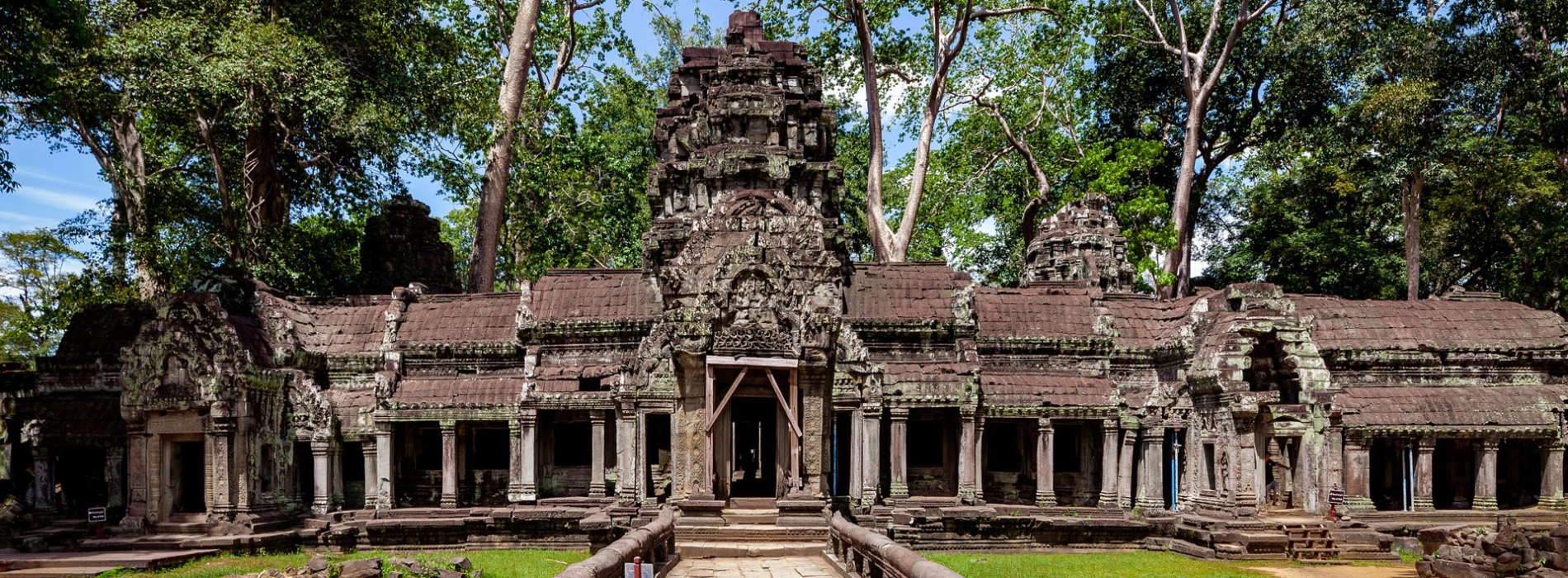
Ta Prohm is a famous temple complex located in Angkor, Cambodia. It is part of the larger Angkor Archaeological Park, a UNESCO World Heritage site that encompasses the remains of the Khmer Empire's capital city. One of the distinctive features of Ta Prohm is that it has been left in a partially unrestored state, allowing visitors to experience the jungle reclaiming the temple. This intertwining of stone and tree roots has made Ta Prohm one of the most iconic and atmospheric temples in the Angkor complex. Today, Ta Prohm continues to attract visitors from around the world who are captivated by its unique blend of ancient architecture and the relentless force of nature. The temple is a testament to the passage of time and the delicate balance between human creation and the power of the natural world.
Ta Prohm, originally known as Rajavihara, was built in the late 12th and early 13th centuries during the reign of King Jayavarman VII, who was one of the most prolific builders in the history of the Khmer Empire. The Khmer Empire was a powerful Hindu-Buddhist empire that ruled over much of Southeast Asia from the 9th to the 15th centuries, with Angkor as its capital.
The temple was constructed as a Mahayana Buddhist monastery and university and was dedicated to the Buddhist deity Prajnaparamita. It served as a center for learning, housing thousands of teachers, officials, and dancers. Ta Prohm was part of the larger Angkor Thom complex, which also included the famous Bayon Temple.
After the fall of the Khmer Empire, Ta Prohm, like many other temples in the region, fell into disrepair. Over the centuries, the jungle slowly reclaimed the site, with massive trees and their roots engulfing the stone structures. The temple became a mysterious and romanticized place, hidden beneath the overgrowth.
In the modern era, Ta Prohm gained international fame when it was featured in the 2001 film "Lara Croft: Tomb Raider," starring Angelina Jolie. The movie showcased the temple's atmospheric and picturesque setting, bringing it to the attention of a global audience.
While other temples in the Angkor complex have undergone extensive restoration, Ta Prohm has been intentionally left in a partially unrestored state to preserve its unique blend of ancient architecture and natural elements. The conservation efforts focus on stabilizing the structures and maintaining the balance between the stone ruins and the surrounding jungle.
Today, Ta Prohm is a popular tourist destination, drawing visitors who are fascinated by its atmospheric setting and the captivating interaction between man-made structures and the forces of nature. It stands as a testament to the grandeur of the Khmer Empire and the enduring allure of Cambodia's ancient temples.
A differenza degli altri templi nel complesso del tempio di Angkor, il tempio di Ta Prohm ha una caratteristica unica che è molto interessante da visitare. Ciò che colpisce di più è la vista delle radici giganti e perenni che crescono sui muri del tempio. Ogni ramo di radice penetra in profondità, perforando, abbracciando il muro. Sembra che questi rami degli alberi vogliano proteggere il tempio dalle devastazioni del tempo. Anche se la forma delle radici degli alberi è in qualche modo strana, crea un'attrazione speciale per i visitatori
Tung Tree Zone: The roots of the pear tree extend, enveloping nearly the entire temple. The flourishing, verdant trunks of the trees contribute to the distinctive appearance of Ta Prohm temple.
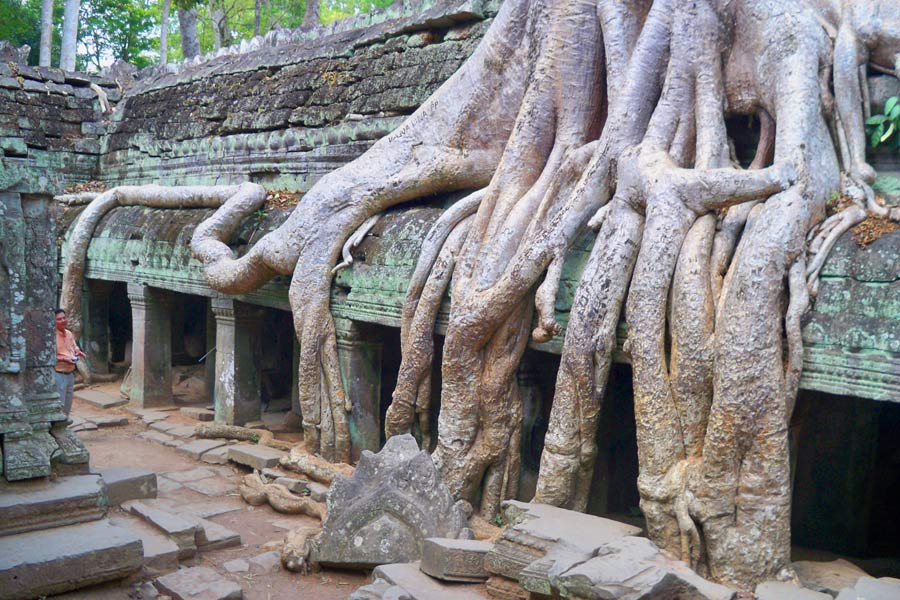
Ta Prohm is a ruined but attractive temple with giant tree roots
Knia Tree Zone: In conjunction with the roots of the tung tree, these tree roots reach the pinnacle of the temple. Notably, they grow away from the faces depicted in the reliefs.

The roots of ancient trees have a strange appearance covering the entire temple
Setting of the Film "Tomb Raider"
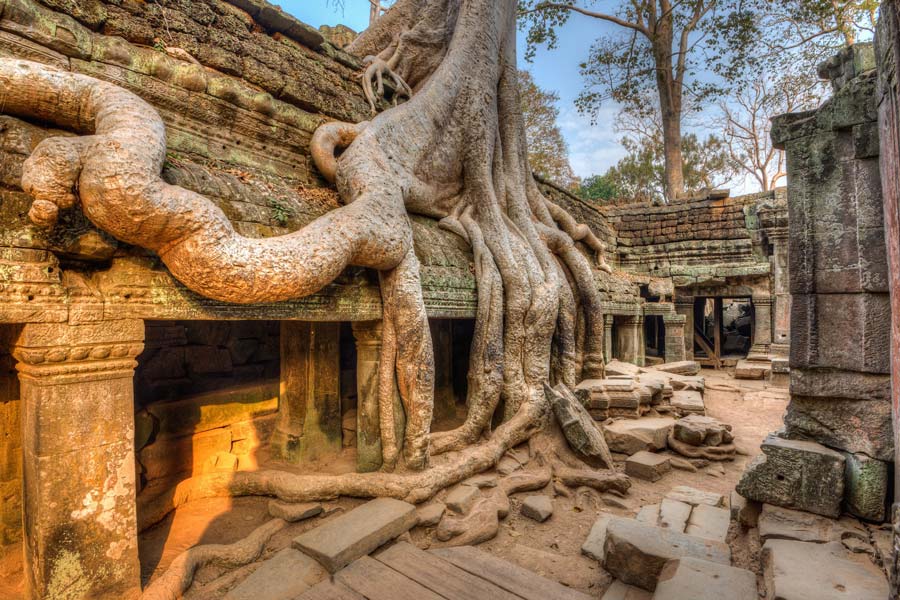
The film "Tomb Raider" (2018) features scenes set in Ta Prohm Temple
Despite the temple's apparent dilapidation, it possesses a certain intense charm that evokes a unique sentiment in anyone who visits, prompting its selection as a Hollywood movie setting for "The Secret of the Ancient Tomb."
Main Hall
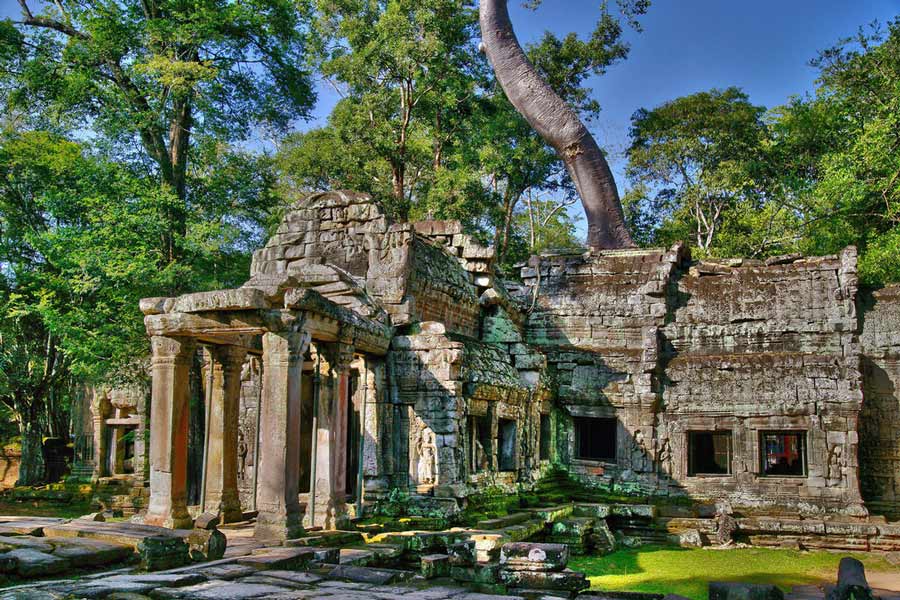
The layout of Ta Prohm reflects the architectural style of the Khmer Empire
It is rumored that the vacant spaces within this main hall once housed diamonds, which were confiscated by the Siamese army. Presently, remnants of the location where the diamonds were stored still exist inside the main hall.
Exploration of the "Chest Pounding" Temple
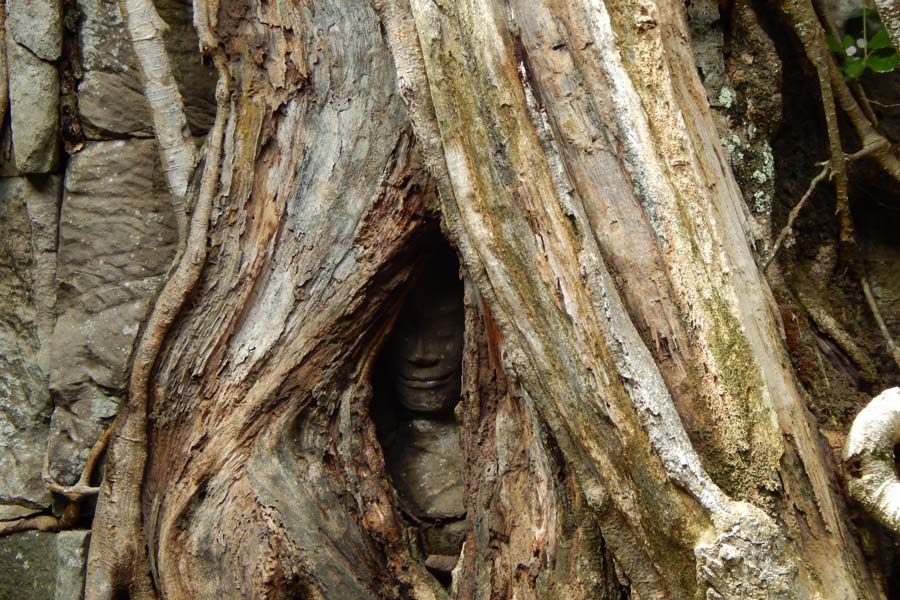
The king, a devout Buddhist, regularly prayed here on full moon nights
Within the Ta Prohm temple precinct, there exists a "chest patting" temple where, upon standing inside, you'll hear the reverberating sound when you pat your chest. Historically, the king, a devout Buddhist, frequented this place on full moon nights to pray when his heart was filled with warmth and anger.
The entrance fee for Ta Prohm Temple is generally included in the Angkor Pass, which allows access to various temples within the Angkor Archaeological Park in Siem Reap, Cambodia. The Angkor Pass prices are set by the Apsara Authority, the organization responsible for managing the park.
It's important to note that these prices are for foreign visitors, and there may be different rates for Cambodian citizens and residents.
In addition to the entrance fee, you may also need to consider other travel-related costs, such as transportation to and from the temple, accommodation, and any guided tours or services you may choose to enhance your experience.
You have the flexibility to explore Ta Prohm Temple throughout the year. Nevertheless, it's advisable to steer clear of visiting Angkor Wat during the warmer month. The best time to visit Ta Prohm Temple, as well as the entire Angkor Archaeological Park in Siem Reap, Cambodia, is during the dry season, which generally spans from November to March.
Ta Prohm Temple is nestled within the expansive Angkor complex. Commencing your journey from the heart of Siem Reap, you'll navigate through two principal thoroughfares: Sivatha Avenue and Pokambor Road. Following these routes, you'll traverse Tusamuth and Charles De Gaulle, the latter being the ultimate road leading to the majestic Angkor Wat.
Embarking on the route from Angkor Wat to Ta Prohm, you are presented with the choice of either strolling leisurely or opting for a more active and environmentally friendly mode of transportation – biking. This allows you to engage with the scenic surroundings and savor the rich tapestry of the Angkor landscape as you make your way to the captivating Ta Prohm Temple